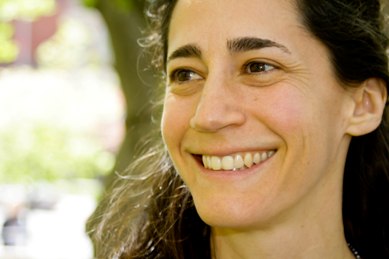
Idit Knaan
Sarah Bryer
As I write this, the government shutdown shows no sign of ending. Under the circumstances, it is hard to imagine a Congress capable of taking action to protect youth and promote safer communities. Yet it did so in 1974, when it passed the Juvenile Justice and Delinquency Prevention Act (JJDPA), and did so again when it repeatedly reauthorized the act over the years — most recently in 2002.
And the act is a great example of just how much good Congress can do for our communities and for youth who come into contact with the justice system. At its heart, the act mandates that states abide by four requirements:
- youth who commit status offenses — i.e., youth who have done things that would not be considered crimes if they were adults, such as running away or skipping school — are not to be held in secure facilities;
- in most cases, youth cannot be placed in adults jails and lock-ups;
- when youth are held in adult facilities, they must be separated by both sight and sound from adults; and
- states must address the disproportionate rate at which youth of color are swept up in the juvenile justice system, from arrest to detention to confinement.
Though these core requirements may seem self-evident or even basic, their importance goes well beyond their actual content. Taken together, they also set a floor of expectations — a useful platform upon which advocates for reform can build.
Youth Who Commit Status Offenses
- In 2007, Connecticut advocates helped pass a law establishing family support centers for high-need youth who commit status offenses, and their families (they later got the budget for the centers increased)
- In Georgia in 2010, advocates helped pass legislation that helped make sure youth convicted of status offenses and low-level misdemeanors were served in the community instead of detention
- Thanks in part to the MacArthur Foundation’s Models for Change initiative, Washington state came into compliance with the JJDPA in 2010 when it closed secure residential centers located in detention facilities that had been used to hold youth who committed status offenses.
Separate Housing for Incarcerated Youth and Adults
- In 2009, Colorado advocates helped pass a law ensuring that some youth tried as adults can be held in juvenile facilities rather than adult jail, and similar laws were passed in Minnesota and Virginia in 2010.
- In 2011, thanks to strenuous advocacy, youth charged as adults in Oregon could no longer be held in adult jails pre-trial; and the Oregon Youth Authority and Oregon Department of Corrections stopped their practice of temporarily housing youth in adult prison before moving them to youth facilities to serve their sentences.
- In 2011, because adult facilities in Hawaii were unable to maintain sight-and-sound separation between youth and adults, advocates successfully championed a law that protected youth from being transferred to adult facilities.
Addressing Racial/Ethnic Disparities
- Just this year, thanks to the work of advocates, Oregon lawmakers can now request racial impact statements for any bill related to criminal justice, juvenile justice, or child welfare—a step that can help legislators adhere to the JJDPA’s core requirement that the state address racial/ethnic disparities in the juvenile justice system.
I could go on and on. Advocates across the country have made great advances in juvenile justice reform in almost every state — work that often ensures adherence to the JJDPA, or enhances its impact.
The JJDPA is crucial legislation that ensures that youth are not unnecessarily embroiled in the juvenile justice system or harmed by it — it’s time to reauthorize it. When Congress gets back to work, and it will, we need to be ready: here’s how can you help.
-------
This commentary is part of the JJDPA Matters Blog Project, a 16-week series that spotlights the landmark JJDPA law that keeps youth and communities safer. You can find the full series in the JJDPA Matters Action Center
Sarah Bryer directs the National Juvenile Justice Network (NJJN), which is made up of 43 juvenile justice coalitions and organizations in 33 states that advocate for state and federal laws, policies and practices that are fair, equitable and developmentally appropriate for all children, youth and families involved in — or at risk of becoming involved in — the justice system.
Ms. Bryer has been working in the juvenile and criminal justice fields for more than 20 years. Prior to joining NJJN, she was the Director of Policy and Planning at the Center for Alternative Sentencing and Employment Services (CASES) in New York City, an alternative-to-incarceration program serving more than 10,000 misdemeanor and felony-level, court-involved youth and adults per year.
